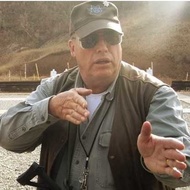25 June 17
“Life!
What inscrutable card shall ye throw next upon the soft felt of our days?”
Colson Whitehead
Quoting Musashi, we often warn our students of the hazards associated with having “favorite weapons.” Because we know, as Musashi did, that a “favorite weapon” (or its curious, but consistent, absence) will invariably become a convenient “excuse to lose.”
Telling ourselves that victory is impossible, absent a certain set of circumstances, sets us up for serial failure. It is a flawed personal philosophy, and represents a lethal snare that Operators must avoid.
Who thus adhere to the “resistance-is-futile” philosophy are already defeated, before any species of fight ever starts!
They’re losers. They’ve set themselves up to lose, and are only rarely disappointed!
Equally fatal is the “everyone-wait-a-minute, -so-I-can-get-ready” approach to serious fighting.
And yet, we regularly see the foregoing actively practiced during supposedly serious training!
Examples:
What do we do when we have our favorite rifle, but not our “favorite sights?”
Most of my Urban Rifle students report to training with modern, military rifles, and most are equipped with sophisticated optics, mostly red-dots- Aimpoints and EOTechs.
When I start a tactical drill, I look at a student and say, “Go!” Students are expected to instantly spring into action, get moving, devise a plan on the run, and then aggressively solve the problem. Tactical drills are only vaguely described beforehand. I don’t provide detailed instructions.
We’re training Operators, not Rockettes!
What happens when our student belatedly discovers his optic’s brightness is set so high that he can’t see anything beyond the glowing dot, or so low that he can’t see the dot/reticle at all. Or, is otherwise less-than-optimal?
In the latter example, do we fight though the problem, without the slightest vacillation, deploying BUIS (Back-Up Iron Sights), when necessary, while on the move?
Or, do we stop what we’re doing, plant our feet in cement, and then gawk at our gun as we stand motionless adjusting dials to perfectly suit our needs?
In the latter case, when the student finally gets back into action and completes the exercise, I remind him that his distracted, motionless hesitation was likely fatal!
In fact, in some tactical exercises, I require that the optic but turned off at the beginning of the drill. In others, I require the optic’s brightness to be turned-up as high as it will go.
When I say, “Go,” my student must instantly, efficaciously deal with the problem, with no “intermission!”
When the dot is too bright, are you automatically using your support-side eye to superimpose the too-bright dot on the target? This is the BAC Technique (for Bindon Aiming Concept), named after Glyn Bindon, founder of Trijicon. It can be used with both magnifying and non-magnifying optics, but not all people can make it work. When it works for you, it is a useful addition to your toolbox, and one that needs to be exercised regularly!
And when the dot isn’t there at all? Are we trained to smoothly deploy BUIS while on the run, and then continue fighting as if nothing happened?
When using BUIS, and we discover our small aperture has been inadvertently flipped-up, and
we wanted the large one (or vice-versa)? Do we make-due and stay in the present tense, or do we insist on stopping and making adjustments?
What about our corrective glasses? Do we practice sometimes with non-corrective safety-glasses? Our regular glasses might get knocked-off or broken. Can we still be effective, even when operating with out-of-focus vision?
Many (myself included) have a degree of astigmatism in one, or both, eyes. When using my Aimpoint, I therefore don’t see a red “dot.” I see a red “slash.” It looks like a comet! I’ve had to learn to use the head of the comet as my aiming-point. Works fine! Not optimal, but adequate to achieve rapid hits at most ranges.
Most lethal fights (like most surgeries, most criminal trials, and most building projects), are little more than a “series of disasters!”
The difference between ultimate triumph, or catastrophe, lies in the way we handle disasters, in our icy persistence and determination, in our ability to make things go our way despite less-than-optimal conditions and circumstances, in our uncanny knack for snatching victory from the jaws of defeat!
When someone handles good fortune well, that tells me little about him. Anyone can do that!
Operators surely handle success well, but we also train ourselves, in fact we spend most of our training time, to handle disaster(s) well!
“Life is not always a matter of holding good cards, but sometimes playing a poor hand well.”
Jack London
/John


